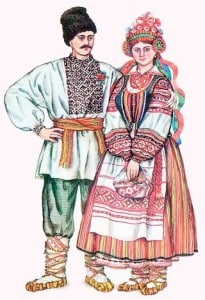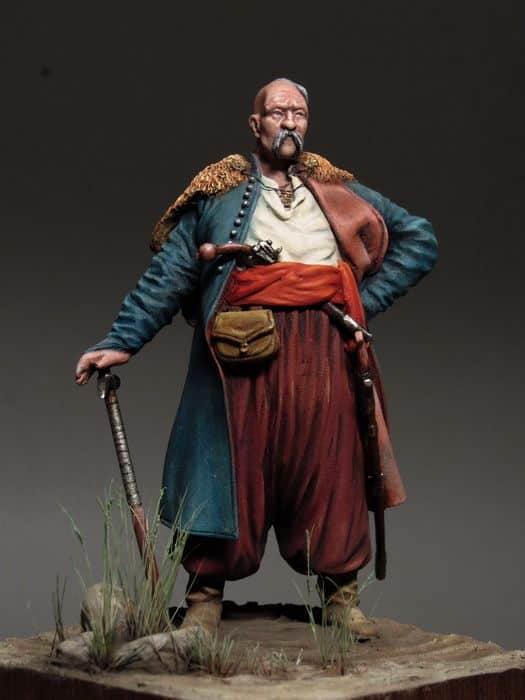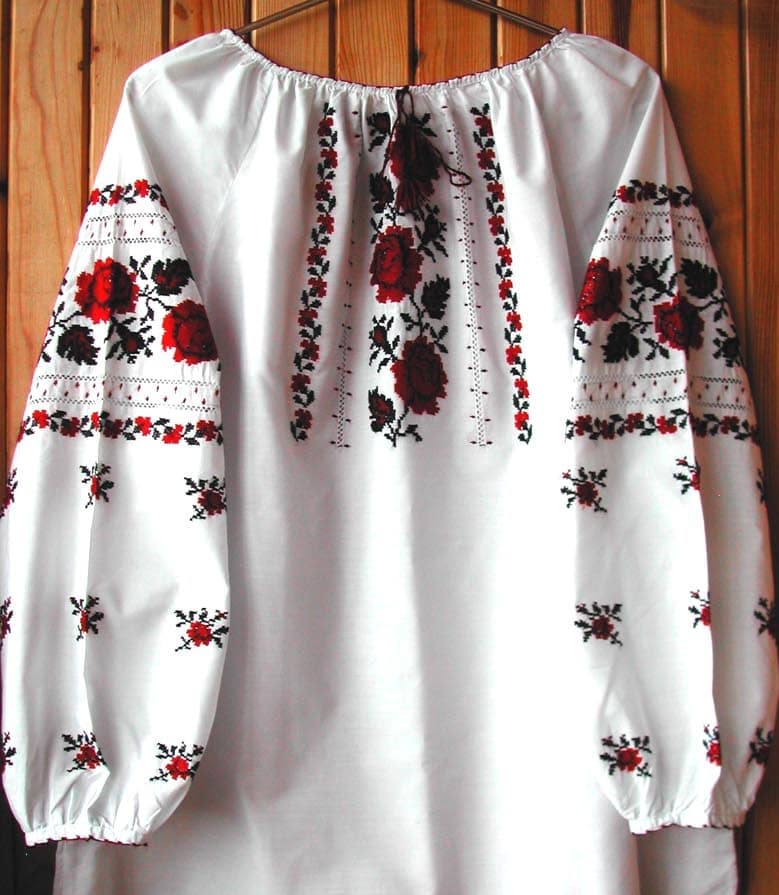 The traditional Ukrainian wardrobe was a far cry from today’s red-rose-and-leopard print spandex and ostentatious, all-white ensembles, but there remain a few common threads – the love of exotic imports, the attention to and care for details and the significance of the clothing as part of the social environment and surroundings.
The traditional Ukrainian wardrobe was a far cry from today’s red-rose-and-leopard print spandex and ostentatious, all-white ensembles, but there remain a few common threads – the love of exotic imports, the attention to and care for details and the significance of the clothing as part of the social environment and surroundings.
The basic elements of the Ukrainian costume developed during the Kyivan-Rus era. The main elements of dress were the shirt, trousers, cloak, sheepskin vest, overcoat, cap, footcloths, stockings, and boots. Princes and boyars (the upper ruling class) wore clothes influenced by Byzantine fabrics and ornaments (there’s no denying that they were always into exotic imports).

During the Kozak (Cossak) period, the nobility dressed in Renaissance styles prevalent in Europe, with the addition of long overcoats and sheepskin jackets to protect against the climate. Kozak officers adapted this dress to military needs, with short caftan or zhupan, wide trousers or sharovary, and cloak or kyreia.
During the golden age of Ukrainian folk costume, in the 19th and the beginning of the 20th centuries, great care was taken to have every item of the dress in full correspondence with the requirements of custom and tradition. The occasion and the season determined what kind of dress was to be worn. The wedding dress epitomized the beauty and expectation of youth; it was resplendent with decorations and adorned lavishly with embroidery. During snowy Christmas eves, the young women and girls singing merry kolyadkas (Ukrainian Christmas carols), wore white sheepskin coats and bright, multicolored handkerchiefs.
 THE SHIRT — AN ANCIENT SLAVIC GARMENT
THE SHIRT — AN ANCIENT SLAVIC GARMENT
In addition to being just an article of clothing, the shirt had a special, sometimes symbolical meaning for those who wore it. It was not too long ago that village girls who wanted to put a love spell on a lad they fancied, would wear a “magic” shirt while they cooked up an “enchanting ceremony,” and they had to start making this shirt on The Night of Ivan Kupala — an ancient pagan holiday celebrated in summer.
The shirt to be worn on weekdays differed, naturally, from the one that was worn on Sunday. Every woman was supposed to know how to make a shirt, and teenage girls at the age of 12 were taught how to do the needlework and whatever else that was required for being a good housewife. A woman of some means had about 15-20 shirts, and a bride from a well-to-do family was expected to have no fewer than 50-60 shirts in her dowry. The number of shirts, their quality and type of embroidery were good indicators of what the girl was as a potential housewife.

